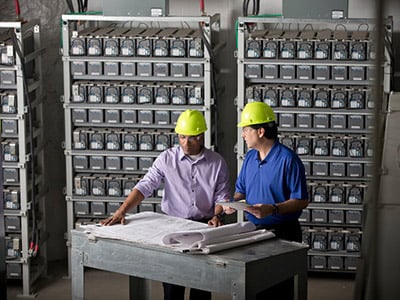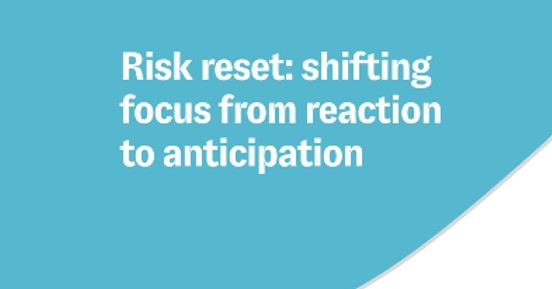Building the data centre of the future
Alex Sharp, Global Head of Design and Construction at Iron Mountain, takes a look at data centres of the future.

Alex Sharp, Global Head of Design and Construction at Iron Mountain, takes a look at data centres of the future.
Like most industries, the data centre industry has evolved, especially in recent years. While basic data centre design hasn’t changed much, some aspects of it have greatly improved.
Cooling is a good example. Ever since The Green Grid introduced the Power Utilization Effectiveness (PUE) metric in 2007, data centre efficiency has been under the spotlight. There is a focus on how we cool data centres.
When I first started building data centres, for every kilowatt of power a server used, it would generally require another kilowatt of thermal energy to cool it down. Nowadays, using modern cooling techniques, accepting higher server ‘air on’ temperatures and deploying hot or cold aisle containment, we can generally cool the facilities for a tenth of the power utilised by a server.
This means that data centres can be far more efficient and produce less carbon emissions, and we don’t need as much engineering infrastructure in place to achieve acceptable environmental conditions.
Another data centre improvement is that with the advent of larger requirements from our customers, we can now build out more standardised designs. That means we can build for a known cost and to a uniform timeline.
What is Driving Change?
Customers, of course, drive most changes. Today, data centre customers demand more sustainable data centre solutions. Our customers often look to cap PUE in deals to take space in our facilities. They want to know if our data centres are powered by renewable energy sources.
In many cases, they are looking to deploy highly efficient servers, where one rack can replace six older versions, placing more emphasis on air management, cooling and containment systems.
Many of today’s customers have exacting Corporate and Social Responsibility targets, and many include their outsourced data centre power consumption and carbon emissions in calculations of their own carbon footprint.
But it’s not only customers driving change. The data centre industry is changing from within. At Iron Mountain Data Centres, we’re firmly committed to sustainability and green energy solutions across our entire global footprint – and I know others in the data centre industry are too.
In addition, many governments are demanding more efficient, sustainable, environmentally considerate data centres, whilst reducing carbon emissions to align with their reduction targets.
Ultimately though, we shouldn’t need a government to tell us to do this. Every data centre operator in the world should feel an obligation to minimise the impact they have on the environment and surrounding communities.
Building a Sustainable Data Centre
To me, building a sustainable data centre means building facilities that don’t have a lasting, detrimental impact on the planet. It means powering our data centres from renewable energy sources; it means designing the most energy efficient facilities we possibly can and using the very latest techniques and engineering infrastructure to provide efficient power and cooling to our data halls.
It also means considering the recyclable content of materials we use for our facilities, minimising waste to landfill and consider recycling waste heat, whilst ensuring our facilities are well maintained. It means working with our customers to ensure they are streamlining their computing practices and deploying highly efficient server technology.
Today, renewable energy is often less expensive than brown power. Buyers can negotiate long-term fixed-price or stable-price contracts for energy. This means energy costs from companies using renewables are likely to be more stable and offer more reliable pricing than fossil fuels.
If we can do all these things, then we are moving toward a sustainable data centre and a sustainable business. What’s good for the planet is good for business.
How the Internet of Things (IoT) Has Impacted Data Centre Development
IoT devices gather large amounts of data which can put big demands on data centres and their networks. Whilst much of the focus around the IoT tends to be around the decentralization of deployment or edge computing, where devices sit close to the end points they are monitoring, the centralised data centre and Cloud still play a crucial part as data is streamed back to a centralized hub for analysis.
Connectivity is often an issue as most of these applications require a low latency connection from their out-of-town location back to the centralised data centre.
Ironically, this means that despite measures taken to reduce energy consumption and carbon emissions – things like electric vehicles, autonomous cars, smart building systems controlling efficient use of HVAC systems through temperature sensors, reduced airline travel by holding video calls, etc. – this drives more traffic through our data centres and increases energy consumption.
In terms of Edge data centres, we are seeing increasing demand from customers who require smaller parcels of IT capacity in out-of-town locations. This can be a challenge for data centre operators, since the size of a potential deployment may not justify the investment required to build a new facility outside of primary data centre locations.
At Iron Mountain Data Centres, we have a unique advantage on Edge data centres since we already operate 1,450 global storage facilities through Iron Mountain Group. This provides access to existing facilities in many secondary and tertiary locations.
Selecting a Building Site
When it comes to selecting a data centre location, customer demand is usually focused on developed and established locations. As a result, all of the pre-requisites of data centre facilities – available power, access to established networks and connectivity, local governments who understand and welcome data centre businesses – are available and can deliver functional facilities in a timely and cost effective manner.
From a funding perspective, debt and equity lenders are far more comfortable lending for developments in established markets such as the FLAP markets in Europe; North Virginia, Phoenix, Dallas, New York, Silicon Valley, Atlanta and Chicago in North America; and Singapore, Hong Kong, India, Australia and Japan in APAC.
Data Centre Locations in Demand
At Iron Mountain Data Centres, all our developed markets are in demand. In Europe, we’re seeing demand in FLAP and the Nordic countries, as well as inquiries from places like Berlin and Munich in Germany, Milan in Italy, Madrid in Spain, and other locations in Switzerland, Poland, Turkey and Belgium.
In North America, all the key markets are busy, but our biggest demand continues to come in Virginia and Phoenix.
In APAC, our Singapore facility is close to being full and we are seeing increasing amounts of inquiries for Hong Kong and Indonesia. Our largest growth potential, however, is coming from India, where we expect demand to double over the next couple of years in markets such as Mumbai, Chennai, Bangalore, Kolkata, Hyderabad and Pune.
Different Solutions for a Variety of Customers
Data centre customers are diverse, and their data centre needs are too. Our retail colocation customers often want a standard product offering in an existing facility. We strive to provide tailor-made solutions for our customers, but many colocation customers are happy with standard designs and can make it work for their requirements.
Our bigger customers often have specific engineering requirements. These are often larger deployments that require exclusive use of a data hall and the associated engineering infrastructure. We are seeing an increasing trend for some of our bigger customers to be actively involved in the design process.
The Data Centre of the Future
In the future, I think we will see a rise in decentralised locations for data centres, driven by Edge. Data centres will be far more efficient in the engineering infrastructure, as well as the efficiency of the servers deployed within the facilities. As design evolves, data centres will hopefully consume less energy, generate less heat and be able to operate at higher temperatures.
I suspect the operating temperatures within data halls will increase and engineering infrastructure will be simplified as customers will be more dependent on the resiliency of their own equipment, rather than rely on the infrastructure of their host. AI will inevitably be used to much greater effect to ensure efficiency and resilience.
We will also see more carbon reduction technology such as carbon scrubbers. These are just one more step towards a future where data centres become harmless to the environment. Hopefully, with each new development, we are closer to meeting that goal.
Featured services & solutions
Related resources
View More Resources Premium
Premium
